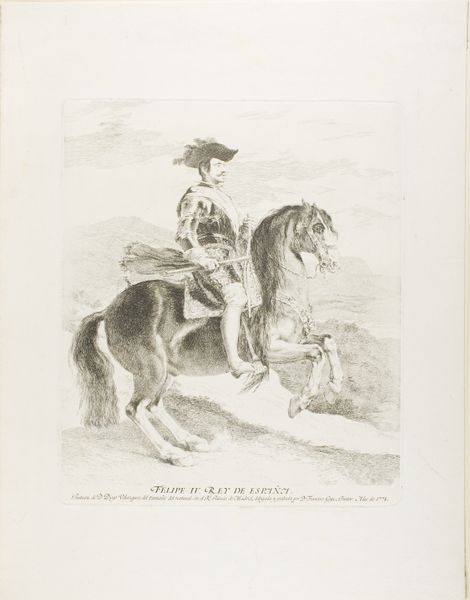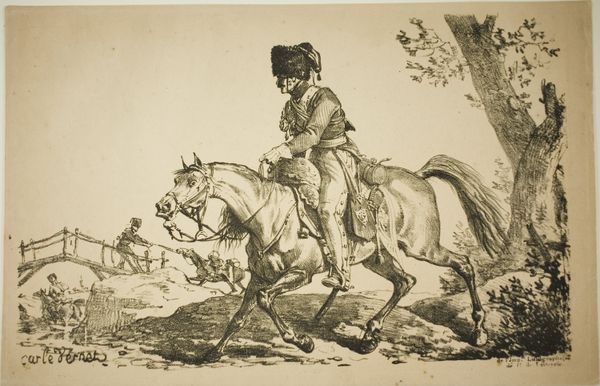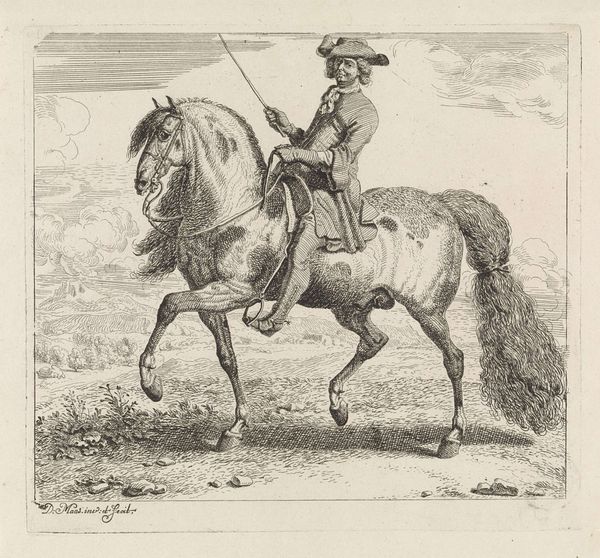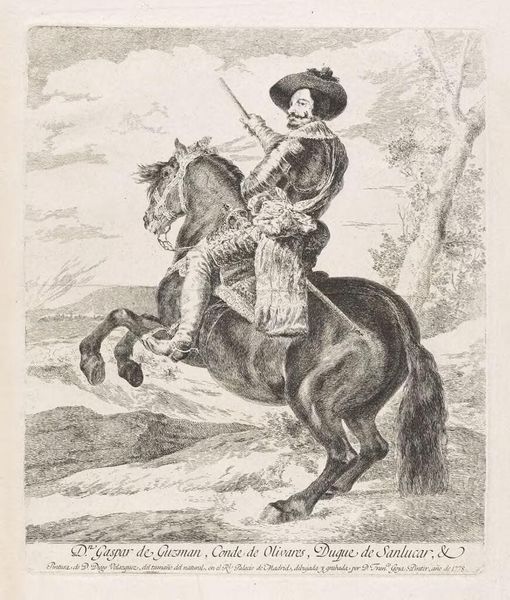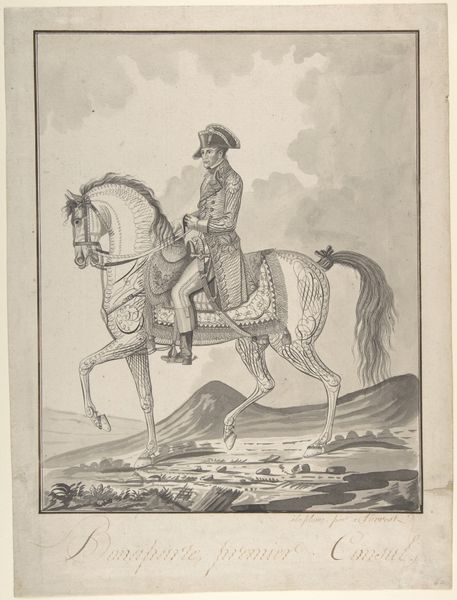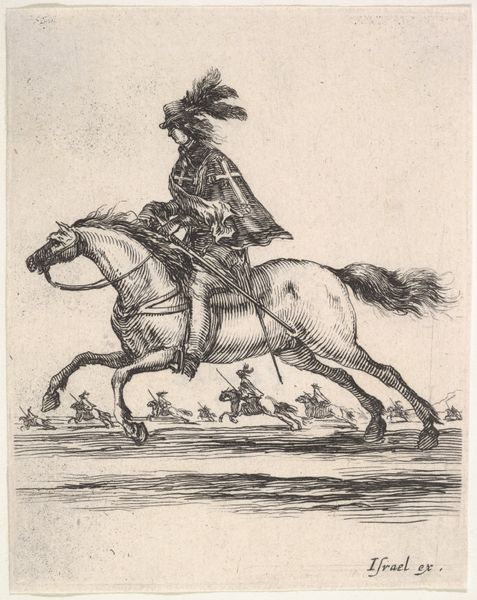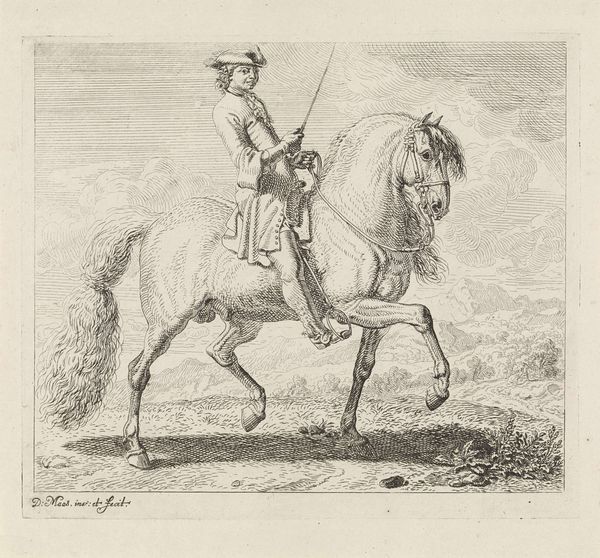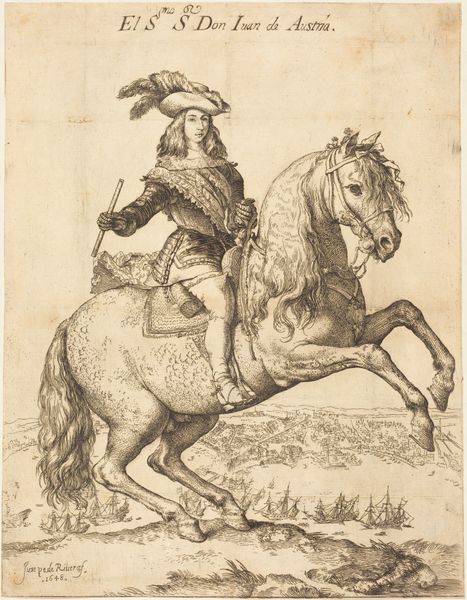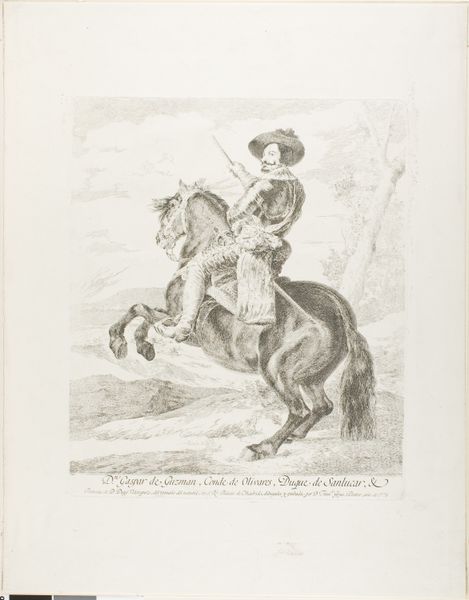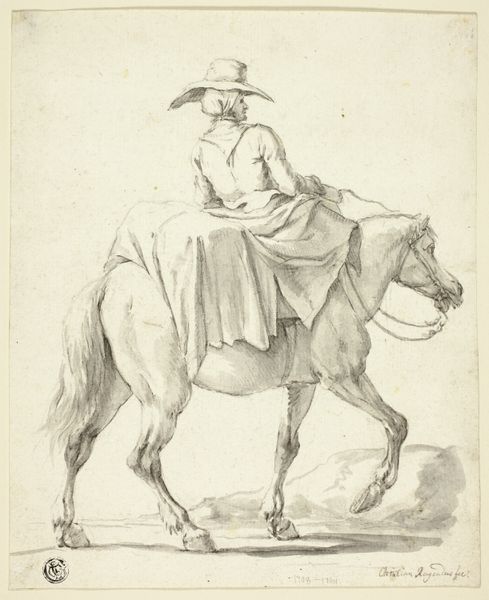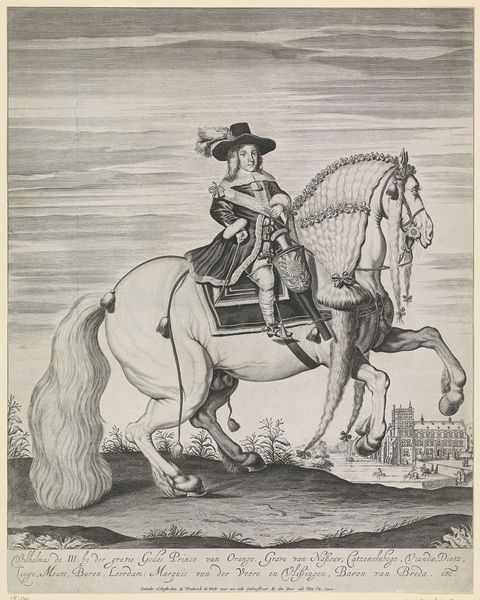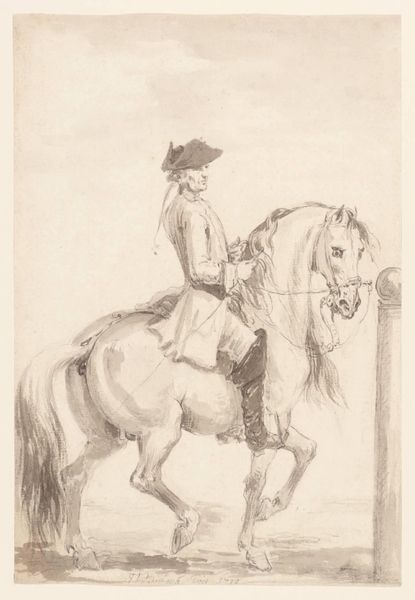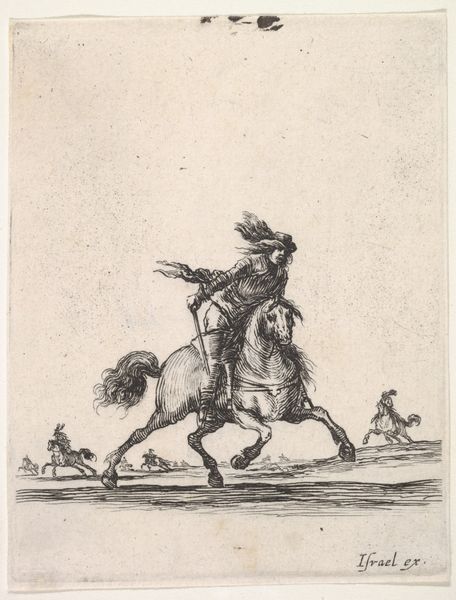
Dimensions: 370 mm (height) x 310 mm (width) (plademaal)
This print, *Filip IV, konge af Spanien, til hest*, was made by Francisco de Goya, and the inscription tells us that it was etched after a painting by Diego Velázquez, copying it 'from nature' in the Royal Palace of Madrid. The process of etching involves applying a waxy ground to a metal plate, scratching an image into it with a needle, and then immersing the plate in acid. The acid bites away the exposed metal, creating lines that hold ink. It's a relatively indirect process, demanding planning and skill to control the depth and quality of the lines. Consider the labor involved; not just Goya’s, but also the craftsmen who prepared the copperplate, ground it, and so on. Think, too, of the many impressions that could be taken from a single plate: etching was a reproductive technology, like photography today, and one that allowed Goya to disseminate an image of Spanish royalty. This wasn't just about replicating an image; it was about democratizing access to it. By understanding the processes involved, we begin to see how the artist acts as a conduit between the circles of royal power, artistic skill, and public consumption.
Comments
No comments
Be the first to comment and join the conversation on the ultimate creative platform.

